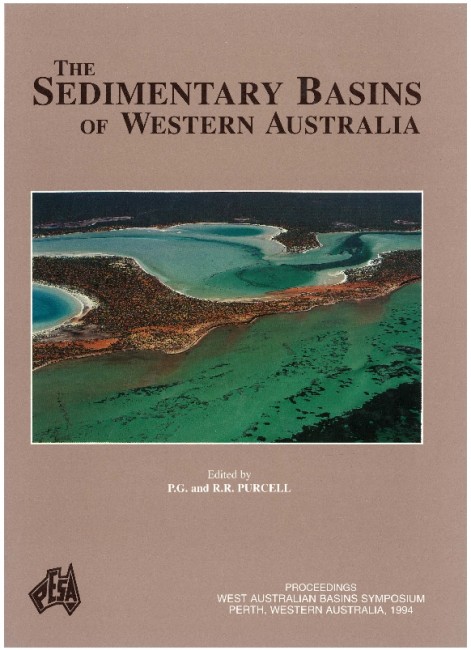Publication Name: The Sedimentary Basins of WA
Authors: L.B. Harris, R.I. Higgins, M.C. Dentith and M.F. Middleton
Publication Volume: 1
Date Published: July 1994
Number of Pages: 20
Reference Type: Book Section
Abstract:
In order to investigate the temporal and spatial development of faults in the north-south trending Perth Basin of Western Australia, an analogue model was constructed using two silicone putties of different viscosity to represent ductile Mesoproterozoic and Neoproterozoic basement terranes, a clay block to represent the Archaean Yilgarn Craton, and sand layers to simulate brittle, upper basement and sedimentary cover sequence. The model was subjected to two phases of deformation with orthogonal applied maximum extension directions deduced from field studies and palaeostress analysis. In the model, en echelon stepping faults striking north-northwest formed during the first event and were reactivated for a considerable time after the 90? change in the orientation of the applied extension direction. These structures acted as oblique-slip transfer faults, accommodating displacement on northeaststriking normal faults developed between them and the clay slab. Late in the second extensional phase, displacement ceased on structures striking northnorthwest with formation of regularly spaced normal faults striking northeast, which curved to a northnortheast orientation towards the margin of the clay block. Despite the complex pattern of faulting observed in plan view, with major variations in the strike of structures and changes in displacement with time, simple block faulting, with only minor rotation of bedding, is revealed on cross-sections through the model.Results suggest that regional fault patterns and the localisation of sub-basins and structural highs in the Perth Basin may be explained by the superposition of a northwest-southeast extensional regime upon structures developed during northeast-southwest extension. Differences in basement rheology and the curvature of the Yilgarn Craton margin (a function of Precambrian terrane boundaries) may have exerted an important control on the localisation and orientation of faults in sedimentary strata of the basin. Simplistic fault patterns interpreted on seismic sections for the Perth Basin (and other similar transtensional basins) may belie a complex
deformation history.


